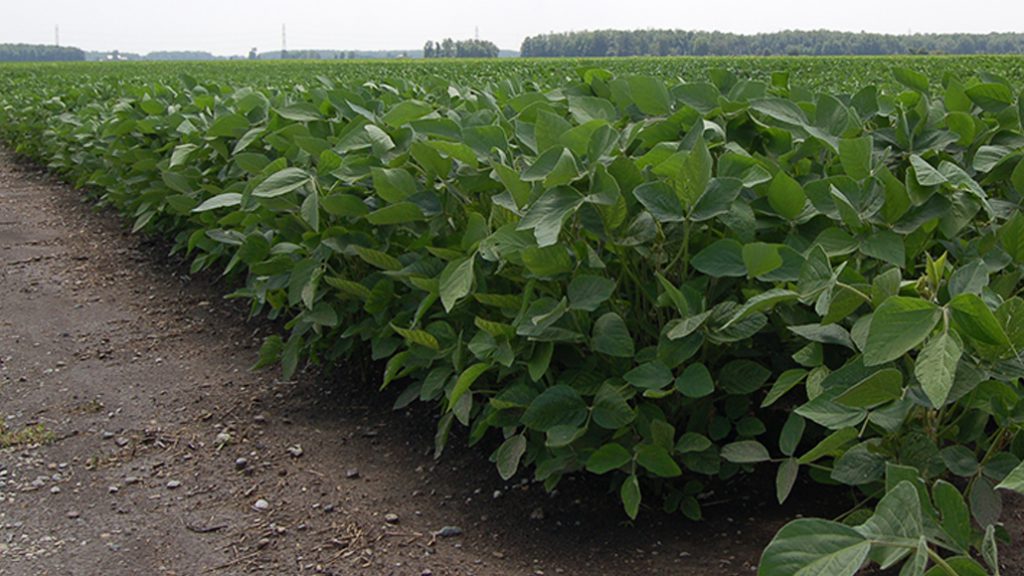Preserving the future of farming
A COMMITMENT TO SUSTAINABILITY

GRAIN FARMERS OF ONTARIO is committed to sustainability. As an organization, we view sustainability as the ability of our farmer-members to be economically viable, while not sacrificing their social and environmental responsibilities.
The world population will reach more than nine billion by 2050 and farmers will have to feed everyone. To do that, we must continue to produce more with fewer resources. Technology has already dramatically increased our ability to produce more food, and now the next stage is utilizing technology to meet the demand for sustainably produced commodities while also meeting consumers’ need to know more about how their food is produced.
“Farmers can make more accurate agronomic decisions about their fields with information they are already collecting through the use of satellite or drone imagery, soil samples, and other precision data,” says Michael Buttenham, market development coordinator — sustainability and environment for Grain Farmers of Ontario. “For many grain farmers, this may seem routine; but those outside the agricultural sector may not realize that technology plays an integral role in producing food in the sustainable and environmentally responsible way they are demanding.”
WHAT YOU NEED TO KNOW
|
ECONOMICS
Being environmentally responsible is also good economics for farmers. For example, the use of nitrogen stabilizers and controlled release technology has given farmers the ability to maximize the nitrogen available to a crop and minimize loss. On-farm weather stations have led to the better timing of field applications and in-field monitors detect if and how nutrients are leaving the field. Sensors have led to a better understanding of soil compaction which impacts soil health and crop growth.
Utilizing this technology can result in a better return on investment and adds to the sustainability of your farm. But, low-tech options shouldn’t be forgotten either.
“Crop rotation is a very underrated practice that is widely used in Ontario,” says Buttenham. “It helps control insects, diseases, and weeds, improves nutrient cycling, and improves overall soil health.”

Similarly, cover crops are a valuable tool more farmers are choosing to incorporate on their farms. Reduced soil erosion, increased organic matter, improved nutrient cycling, and lower fertilizer inputs are all beneficial environmentally and economically.
ADAPTING
“There is a good story to tell about Ontario agriculture; however, there are a number of threats that could impact the future viability of our industry. So we need to make sure we don’t become complacent in how we adapt to our changing environment,” says Buttenham.
One benefit of climate change has been the extended growing season which has allowed farmers to use new crop varieties. However, we are also seeing more extreme weather events. During the past couple of years, farmers have dealt with both extreme flooding and droughts during key planting and growth periods. Crops have also been damaged by hail and diseases which thrive in extreme conditions.
As we deal with the need to reduce the human impact on climate change, farmers are often targeted and their practices questioned. There are a number of things farmers and people within the broader agriculture supply chain are doing that make our industry sustainable; we need to communicate our progress to all levels of government, retailers, end users, and the public.
It is now common for many multi-national corporations who are end-users of our commodities to request proof of sustainable farming practices. Several programs are in place which outline verification standards and they provide key baselines to track the ongoing progress of our industry.
VERIFICATION
Grain Farmers of Ontario has supported the development and implementation of the Sustainable Agriculture Initiative (SAI) Platform and the 4R Nutrient Stewardship program in our province. We believe they help us earn and keep our social license to farm.
The SAI Platform is the main food and drink industry initiative supporting the development of sustainable agriculture worldwide. It helps to drive sustainable agriculture through the value chain by having farmers go through their Farm Sustainability Assessment (FSA).
“This helps to provide greater transparency and gives us an opportunity to highlight some of the great practices we are doing,” says Buttenham.
Likewise, 4R Ontario has been established as an industry initiative working towards the sustainable use of nutrients (Right Source @ Right Rate, Right Time, Right Place®). (You can read more about this program on page 10.)
More than 50 per cent of Ontario farmland is classified as high quality, and it’s important to maintain the soil to ensure our continued productivity. Farmers also preserve forests and provide habitat to increase biodiversity.
As farmers we claim to be true stewards of the land — our livelihood depends on the sustainability of the natural environment. Grain Farmers of Ontario is helping to ensure we have the technology, ability, and public support to preserve the future of farming. •
























